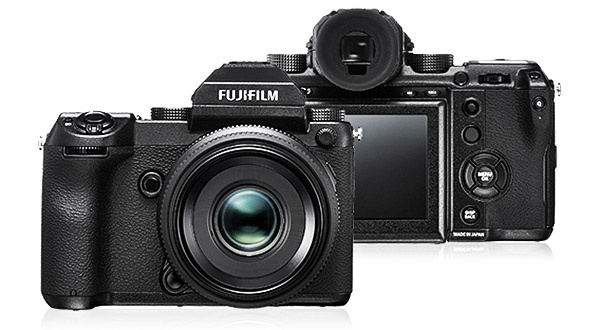Fujifilm’s mirrorless camera bodies have been the talk of the town of late. While the crop-sensor line has had a growing following for some time, and the recent updates for the X-Pro2 and X-T2 have only accelerated user enthusiasm, it’s the medium format GFX 50S that has been saturating the press. With its 51.4MP sensor, modest size and weight, excellent ergonomics, and relatively reasonable price, it is creating a sensation. 
Clearly the GFX 50S is not a casual camera. With a body-only price of $6,500 it’s in a separate category from all but the highest-end “35mm style” DSLRs. Lens choices are good for a brand new system with three currently available and three more to follow in the very near future. Early field tests and image galleries describe a camera that will appeal to a host of serious shooters. See some initial reviews here, here, and here.
While it’s early in the piece, not all commentary is quite so laudatory. Part of this stems from the inherently technical nature of digital photography advances. To say that all the factors surrounding the capture of photons and conversion to electronic data is complex is a vast understatement, but there are plenty who delight in parsing the details. One such discussion compares the GFX 50S sensor and current lenses to other “full frame” sensors on the market and finds little overall theoretical advantage. Whether this will be borne out on a practical level remains to be seen. On the other hand, the completely opposite discussion as to whether equipment matters at all will continue unabated.
On the lower end, the X-T2 has made a big leap forward as well. With a very traditional-looking “SLR” style and actual hardware dials for basic settings, this small body with an upgraded 24MP APS-C sensor delivers very high quality results. Every brand’s system has its own combination of features, aesthetics, and overall philosophy that set it apart, and Fuji has done so more clearly than many. Fujifilm seems to have a bright future, even in the era of declining camera sales.
One item of note is the clear sense that “digital” has pretty much matured. While there will continue to be technological improvements—some incremental, some larger leaps—tools are now available to support just about any photographic enterprise and meet any image quality need, even though this will do little to stem the eternal debate regarding the importance of “gear” versus “artistic expression.” Most would agree that the proof is in the final product.
